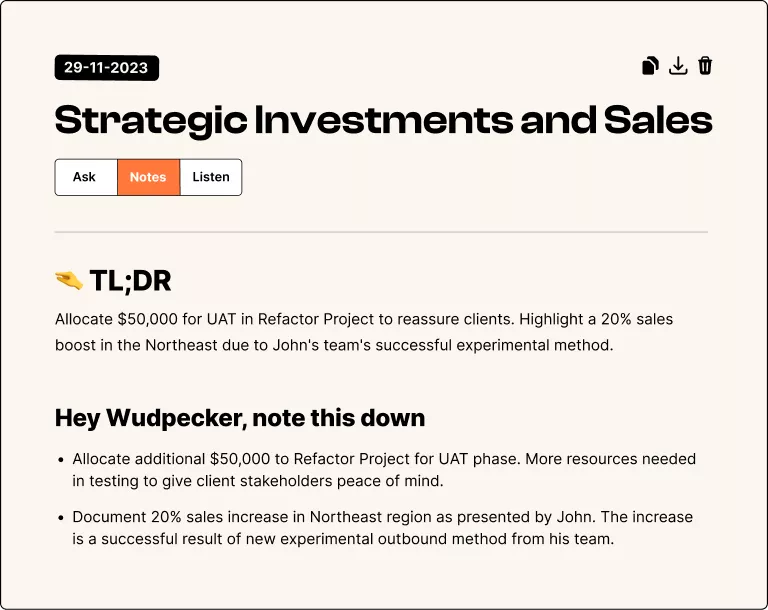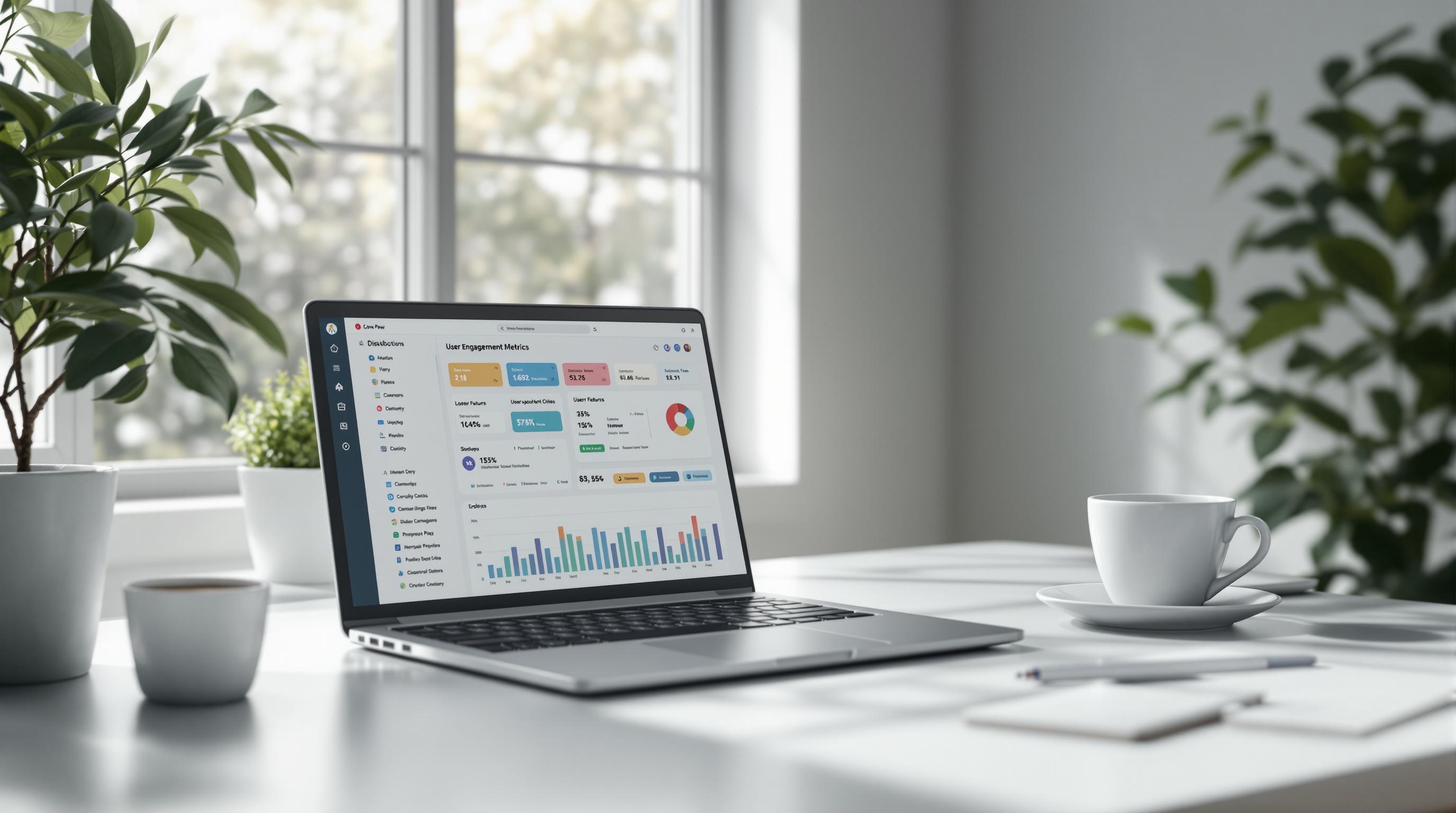Want to know how feature usage drives revenue? Here's the key: by understanding how customers use your product features, you can identify opportunities for growth, reduce churn, and increase revenue.
Key Takeaways:
- Set Revenue Goals for Features: Track metrics like adoption rates, churn reduction, and upsell success.
- Monitor Feature Usage Metrics: Measure engagement depth, usage frequency, and retention.
- Tie Usage to Revenue: Analyze how feature adoption impacts MRR, upsells, and customer lifetime value.
- Segment Users by Behavior: Identify power users, at-risk users, and growth opportunities.
- Prevent Churn: Use early warning signs like usage decline or technical issues to take proactive action.
By focusing on these metrics and strategies, you'll connect product usage to financial outcomes, enabling smarter decisions that boost your bottom line. Tools like Userlens can help streamline tracking and analysis.
Quick Overview:
- Track adoption rates and usage trends.
- Link metrics to revenue impact like MRR and upsells.
- Identify churn risks and growth opportunities.
- Use user segmentation to refine strategies.
Dive into the full article to learn how to measure and maximize your feature ROI effectively.
Core Metrics: Features and Revenue
Feature Usage Measurements
To connect features with revenue, keep an eye on these key metrics:
| Metric Category | Metric | Target Benchmarks |
|---|---|---|
| Engagement Depth | Active minutes per feature/user | 30+ minutes weekly |
| Usage Frequency | Sessions per feature/month | 12+ sessions |
| Adoption Rate | % of licensed seats active | 80%+ within 90 days |
| Feature Retention | Monthly active users retained | 85%+ month-over-month |
These metrics should be tracked at both the user and account levels. It's also important to assess how usage is distributed among team members to identify any gaps in implementation. For businesses in the B2B SaaS space, understanding team-wide usage patterns is especially important. Tools like Userlens can help by providing feature heatmaps that reveal adoption trends across users. Once you’ve gathered this data, align it with your revenue metrics for deeper insights.
Revenue Performance Indicators
While usage metrics show how features are adopted, revenue metrics reveal the financial outcomes tied to those features.
| Revenue Metric | Description | Impact Measurement |
|---|---|---|
| Feature-Tied MRR | Monthly revenue from feature-specific tiers | Track MRR changes after feature adoption |
| Expansion Revenue | Additional revenue from existing customers | Measure upsells driven by feature usage |
| Revenue Per User | Average revenue per active user | Compare adopters vs. non-adopters |
| Time-to-Value | Days until customer achieves ROI | Monitor correlation with feature adoption speed |
Focus on linking revenue to specific features. For example, if accounts generating $5,000+ MRR consistently use premium features, this suggests strong alignment. Similarly, accounts actively engaging with advanced features often show a higher likelihood of upgrading.
Leverage automated dashboards to quickly spot patterns in feature usage that impact revenue. This can also help you address any drops in adoption before they affect your bottom line.
Data Collection and Analysis Methods
How to Track Feature Usage
Set up event tracking to monitor key user behaviors and interactions.
| Data Type | What to Track | Why It Matters |
|---|---|---|
| User Events | Feature clicks, time spent, workflow completion | Reveals how features are actually used |
| Session Data | Login frequency, session duration, feature sequence | Highlights user engagement levels |
| Account Metrics | Team adoption rate, cross-feature usage | Indicates overall account health |
| Technical Data | Load times, error rates, API calls | Pinpoints performance bottlenecks |
Tools like Userlens can generate heatmaps to visualize how team members engage with specific features. These heatmaps make it easier to spot both highly active users and areas where adoption is lagging. Once you have this data, segment users to link their behaviors to revenue insights.
User Groups by Behavior and Revenue
Breaking users into segments helps you understand engagement trends while tying them directly to revenue outcomes.
| User Segment | Behavior Pattern | Revenue Impact |
|---|---|---|
| Power Users | Active daily, using multiple features | High potential for account expansion |
| Growth Users | Active weekly, increasing usage | Moderate upsell opportunities |
| At-risk Users | Declining usage, limited feature use | Could signal possible churn |
| New Users | Exploring features for the first time | Early indicator of future revenue |
Track how users shift between these segments over time. Accounts led by power users often show higher team-wide feature adoption, which frequently aligns with better revenue outcomes.
Long-term Usage Analysis
Extend your user segmentation insights to look at long-term trends and their impact on revenue. This approach helps you understand customer lifetime value and sustained engagement.
| Analysis Type | Timeframe | Key Metrics |
|---|---|---|
| Adoption Velocity | First 90 days | Time to first value, feature discovery rate |
| Usage Stability | 6-12 months | Feature retention, consistent usage |
| Growth Patterns | 12+ months | Feature adoption across teams |
| Revenue Correlation | Quarterly | Relationship between usage and revenue |
Use dashboards to monitor these patterns across different teams within customer accounts. This helps pinpoint which features deliver the most value for specific roles or departments, allowing you to refine your revenue strategies.
Focus on sustained usage trends that indicate long-term growth potential. Teams that consistently engage with advanced features across multiple departments often contribute to stronger revenue growth over time.
The Feature Adoption Funnel: How to measure feature usage ...
sbb-itb-6285ddb
Measuring Feature Revenue Impact
Once you've gathered detailed usage and revenue data, the next step is to assess how specific features contribute to your bottom line.
Feature Revenue Attribution
Evaluate each feature's financial impact by focusing on key revenue metrics. Start by setting a baseline revenue figure and comparing it against changes tied to feature adoption.
| Revenue Metric | Measurement Method | Business Impact |
|---|---|---|
| Feature Value | Compare monthly revenue from accounts using vs. not using the feature | Increase in revenue |
| Expansion Revenue | Track additional seats/licenses purchased post-adoption | Growth opportunities |
| Contract Value | Analyze average deal size for accounts with high feature usage | Improved sales outcomes |
| Consumption Revenue | Link revenue to feature usage metrics | Monetization insights |
Cohort analysis is also a powerful tool for connecting feature adoption to revenue shifts. Tools like Userlens can help you monitor feature usage and revenue trends in real time.
Finding Revenue Growth Opportunities
Dive into feature usage patterns across different customer groups to spot potential areas for revenue growth. Pay attention to these key signals:
| Growth Signal | Action Trigger | Expected Outcome |
|---|---|---|
| Usage Threshold | 80% team utilization | Additional seat purchases |
| Cross-team Adoption | Usage spreads across departments | Organization-wide rollout |
| Advanced Usage | Completion of complex workflows | Upgrade to premium tiers |
| Integration Usage | High API call activity | Opportunities for upselling |
Use these insights to create specific campaigns aimed at encouraging broader adoption of high-impact features. Keep tracking engagement levels to ensure growth efforts also address churn risks.
Reducing Churn with Feature Data
Feature engagement data is crucial for identifying and addressing churn risks. Use benchmarks to catch early warning signs and respond proactively:
| Risk Indicator | Early Warning Sign | Intervention Strategy |
|---|---|---|
| Usage Decline | 30% drop in engagement | Launch a re-engagement campaign |
| Adoption Stall | Features remain unused after 60 days | Provide personalized onboarding |
| Team Turnover | Inactivity from key users | Conduct an account review |
| Technical Issues | Spike in errors or support tickets | Offer technical support |
Combine feature satisfaction scores with usage data to better understand how feature performance affects retention. If engagement drops, take targeted actions to restore value and minimize revenue loss.
Steps to Increase Feature ROI
Better Feature Onboarding
Create onboarding paths that deliver immediate value by focusing on practical use cases and clear success metrics.
| Element | Strategy | Metric |
|---|---|---|
| Interactive Tutorials | Provide step-by-step guidance for key functionalities | Completion rate |
| Usage Milestones | Track progress toward critical actions | Time to first value |
| Contextual Help | Use in-app tooltips and documentation | Reduction in support tickets |
| Success Templates | Offer pre-built workflows for common tasks | Template adoption rate |
Keep an eye on completion rates and time-to-value metrics to spot potential friction points. Once onboarding is running smoothly, shift your attention to campaigns designed to boost feature adoption.
Feature Adoption Campaigns
After users are onboarded, targeted campaigns can help increase engagement with specific features.
| Campaign Type | Target Audience | Metric |
|---|---|---|
| New Feature Launch | All active accounts | 30-day adoption rate |
| Re-engagement | Low usage accounts | Percentage increase in usage |
| Advanced Features | Power users | Level of feature mastery |
| Cross-team Expansion | Department leaders | Spread of team adoption |
Monitor these adoption metrics to ensure your campaigns are effectively driving retention and contributing to revenue growth.
Price and Package Optimization
Fine-tuning your pricing and packaging ensures that the value of your features translates into measurable revenue gains. Use customer usage data to guide these adjustments.
| Area | Data Points | Actions |
|---|---|---|
| Usage Thresholds | Feature consumption rates | Set appropriate tier limits |
| Value Features | Revenue impact metrics | Highlight premium features |
| Bundle Creation | Correlation between features | Group complementary features |
| Upgrade Triggers | Patterns in usage ceilings | Identify natural upgrade points |
Regularly review usage data to make sure your pricing and packaging align with customer behavior. A strong analytics tool can help you track these metrics, streamline onboarding, and refine your pricing strategies effectively.
Conclusion: Taking Action
To boost revenue through feature adoption, focus on clear metrics and systematic tracking. By linking feature usage to revenue, you can make decisions grounded in data. Tools like Userlens's dashboards and heatmaps make it easier to spot trends and take action.
Here are some key metrics to monitor:
| Revenue Indicator | Usage Metric | Action Item |
|---|---|---|
| MRR | Adoption rate | Set revenue targets |
| CLV | Usage duration | Highlight valuable features |
| Expansion Revenue | Cross-feature usage | Plan upsell campaigns |
| Churn Risk | Usage decline | Set up alerts |
Tracking feature usage across your customer base helps you identify patterns that can fuel growth. This data can highlight opportunities to increase revenue, reduce churn, and adjust pricing based on how customers actually use your product.
Take these steps to refine your strategy right away:
- Set up tracking metrics and establish baselines
- Implement alerts for declining usage
- Automate ROI reporting
- Launch campaigns to boost feature adoption
Related posts



.svg)



















.svg)
